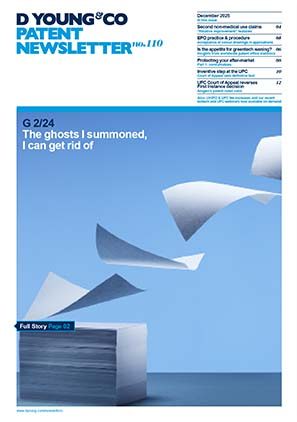A new digital age: European Patent Office scraps the ten-day rule
In November 2022 the European Patent Office (EPO) announced that the ten-day rule, the regime for determining the date on which communications are deemed notified for the purposes of calculating time limits, will be scrapped.
This change, which comes into force on 01 November 2023, will amend Rules 126 and 127 of the European Patent Convention, which currently state that by default communications are deemed to have been notified ten days after they are issued. This ten-day period was introduced when the primary means of delivering communications from the EPO was via post, and was intended to account for potential delays in the postal services. In practice this period provides an additional ten days to respond to a time limit set in many communications.
However, with over 99% of communications from the EPO now being received digitally, the impact of postal delays is minimal, and the ten-day rule now largely just serves to provide an extra few days to meet certain time limits. Therefore, as part of the EPO’s digital transformation, the EPO will amend the rules to remove the ten-day rule and introduce a different safeguard adapted from the Patent Cooperation Treaty (PCT).
The ten-day rule
The current rules (which will remain in place for all communications dated up to and including 31 October 2023) introduce a legal fiction where notification of a communication from the EPO is deemed to occur ten days after the date of the communication.
This principle of the ten-day rule is illustrated in the timeline below. A communication issued by the EPO dated 03 October 2023 is expected to arrive within ten days of the date it was issued by the EPO (that is, by 13 October 2023). The time limit set by the communication (for example a four month time period) begins ten days after the date of the communication, in this case 13 October 2023. The deadline for responding to the communication is therefore effectively 13 February 2023, rather than 03 February 2023.

The new rule
Under the new rules, which apply to all communications dated 01 November 2023 and later, time limits run from the date of the communication. This is shown in the timeline below, where the time limit set by a communication (for example, a four-month time period) begins on the date of the communication. In this scenario the communication is expected to be received within seven days of issue, but this seven-day period is now included in the time limit set by the communication (for example, a four-month time period.

As the vast majority of communications are now received from the EPO digitally, communications can be downloaded as soon as they are issued by the EPO. To provide a safeguard in case there are delays in the delivery of communications, the new rules introduce a safeguard measure similar to that provided under the PCT. Specifically, if the EPO could not show that a communication reached its addressee within seven days of the date of the communication the period for reply would be extended by the number of days by which the seven days was exceeded.
This is shown in the example timeline below where a communication arriving twelve days after the date of the communication leads to an additional five days being added to the period to reply. However, it is important to note that this additional period must be requested and is not added to the deadline automatically.

Conclusion
The removal of the ten-day rule will spell an end to a familiar regime for time limit calculations. While there will be a transitional period of at least six months, where pending communications have different time limit rules applied based on the date of each communication, eventually this change will lead to a simpler system for calculating time limits where all time limits can be calculated in the same way.
It should be noted that this change to Rules 126 and 127 EPC only affects time limits which are set based on the date of the communication. Time limits set by the European Patent Convention (EPC), or other legal statute, such as the deadline for filing a divisional application or the deadline for filing an EPO opposition, are unaffected by this change. Other safeguards and extensions are also provided by the EPO.

